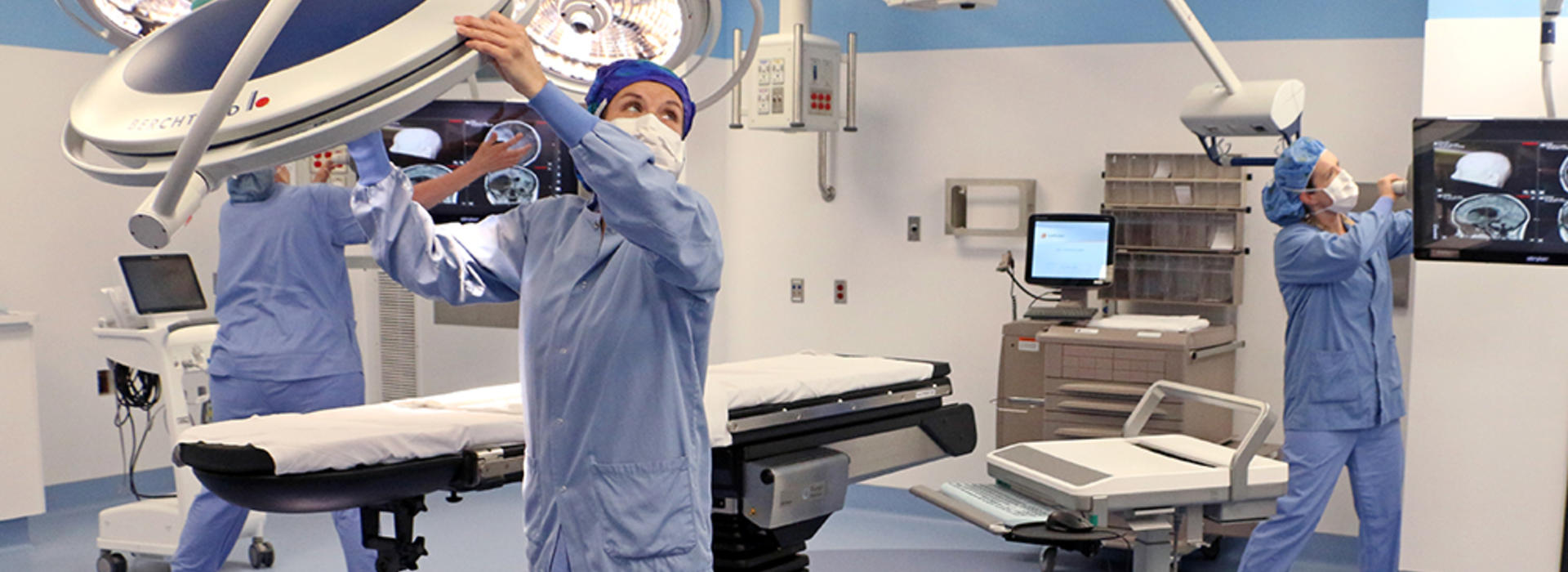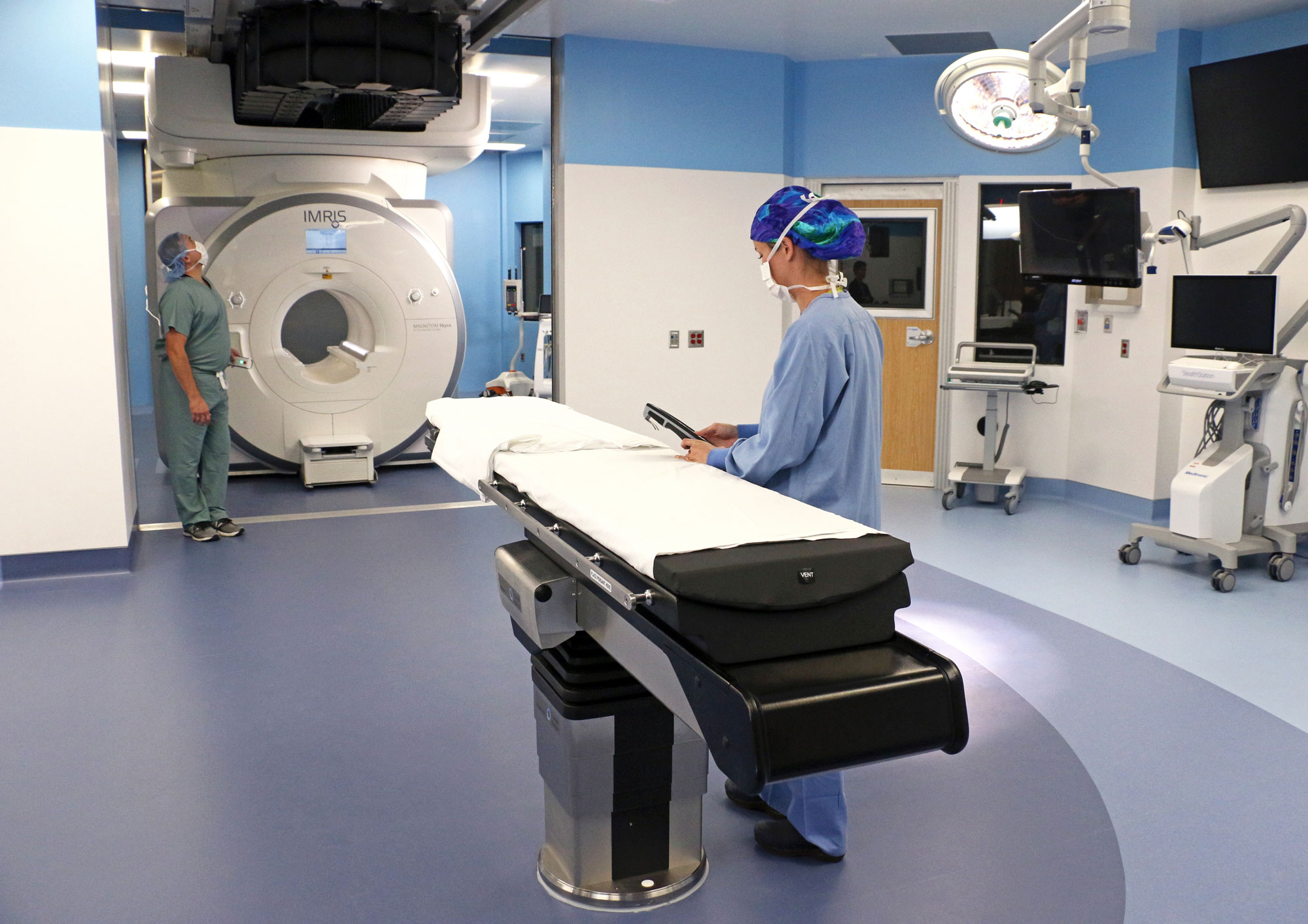
State-of-the-art Neurosurgery Suite will Bridge the Gap between Research and Clinical Care
“This was something that was just theoretical when I was a medical student, and now we are able to deliver cutting-edge technology and research to patients at the bedside,” said Alexander McKinney, MD, a professor in the Department of Radiology, vice chair of Research and director of Informatics and Neuroradiology at the University of Minnesota Medical School.
From groundbreaking to the first patient, the new surgical suite, or “T-Suite,” at M Health Fairview University of Minnesota Medical Center took a little over a year to construct, but the concept of melding clinical technology and research technology had been evolving for decades. It was something Dr. McKinney had been personally dreaming about even before medical school.

“The nurse that first brought me into this room has been here 25 years,” Dr. McKinney said, looking around the T-Suite. “I knew him through my Mom, who was a nurse here for 30 years. When she saw what we're going to be delivering here at the University of Minnesota, she was very proud of me. She said, ‘My son, he's finally doing what I always envisioned him doing.’ I'm excited to make my Mom proud.”
The suite has four rooms, three of which are operating rooms that can be customized for different procedures. One of those rooms can be used for laser ablation, which cannot be performed in a traditional operating room setting. Another can be used for endovascular (catheter-based) procedures like embolization and stroke treatment. Through this multi-room setting, a person undergoing a complex, multi-stage surgery can move for each stage of their procedure, often only needing to undergo anesthesia once. This allows their treatment to be completed over the span of one day as opposed to multiple.
A 3-Tesla MRI scanner travels on a ceiling-mounted rail system between and into the operating rooms to provide diagnostic-quality intraoperative images, delivering real-time information to clinicians while the patient is on the surgical table. Once positioned for surgery, the patient will never need to be transferred for scanning—before, during or after a procedure. This helps clinicians view the images without transferring the patient to the scanner, thus reducing the risk of infection to the patient. Effectively, it creates a new opportunity for neurosurgeons to check their work immediately.
“The building of this suite at the University of Minnesota is an appropriate nod to our legacy of being the first in many of the advances in imaging and in surgery. We had one of the very first intraoperative MRIs in the United States. And so, it is appropriate that this first also occurs at the University of Minnesota,” said Clark C. Chen, MD, PhD, professor, Lyle French chair and head of the Department of Neurosurgery.

This real-time imaging during surgery can also improve outcomes for people with other neurological conditions, including stroke and Parkinson’s disease. Real-time imaging can help physicians understand how neural connectivity changes in the brain as a surgery progresses, allowing stroke or Parkinson’s disease specialists a better opportunity to tailor surgical treatment to the patient.
Dr. Chen and Charles Dietz, MD, the chair of the Department of Radiology, worked with local Minnesota company IMRIS to customize the ideal system, which also includes an observer suite where physicians from all over the world can visit and observe the cutting-edge procedures and milestones happening in the adjacent rooms.
“This space will uniquely allow us to study things we didn’t understand previously. For example, why is it that patients feel no pain under general anesthesia? We know it works, but we don't know how it works,” Dr. Chen said.
Experts like Drs. Dietz, McKinney and Chen look forward to the promise of the T-suite, and how it works to help bridge the gap between research and clinical care.
“To truly actualize the potential of the space, we need expertise from so many different fields—radiology, physics, neurosurgery, biology and neurosciences. By having the suite located at the University of Minnesota, in collaboration with the Fairview Health System, we have the aggregate of that expertise in ways that other places cannot match,” Dr. Chen said. “It took a whole team of people to make this dream come true. Seeing this is like seeing the sunrise on top of the Himalayas. It’s that extraordinary feeling that you can't quite explain.”